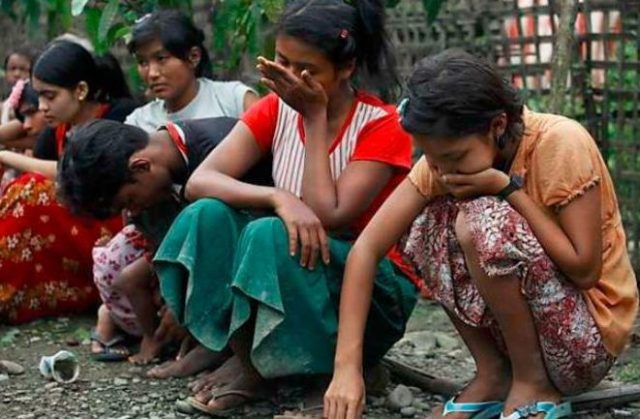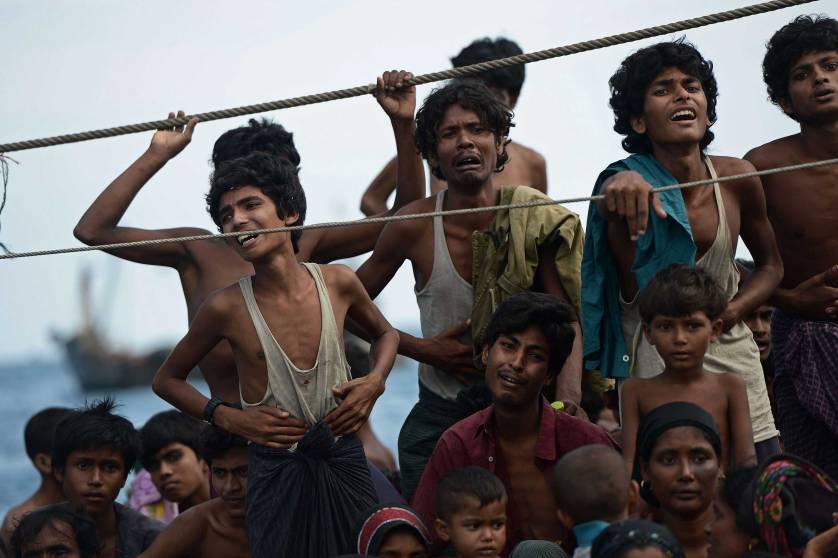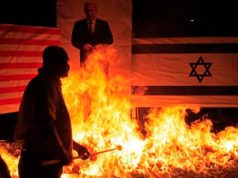The birth of India was accompanied by one of the bloodiest refugee crises the world has ever seen in the history. The United Nations High Commissioner for refugees had reported that approximately 14 million people were displaced during partition to India and Pakistan. The huge influx of refugees into India was followed by violence and conflicts between locals and refugees. Battle centred around land and job led government’s desperate measures to settle refugees in abandoned and uninhabitable tracts of land . Since 1971 India witnessed another inflow of refugees from East Pakistan; approximately 10 million people reached India at that time. Without any other concern the then Prime Minister Indira Gandhi welcomed and promised full support and the government established fifty camps, each with the capacity of 5,000 refugees. It was during the term of erstwhile Prime Minister Jawaharlal Nehru that one of the biggest and most conveniently ignored occupations and migration crisis of South Asia began with the annexation of Tibet by China. The impact was such that thousands of Tibetans had to flee to save themselves from rampage. Many including Dalai lama passed over through the tough terrains of Himalayas and reached India where they were granted asylum by the government and this led to India – China war in 1962.
India had a history of accepting and treating refugees but at the end of the day even India is not a signatory to the 1951 refugee convention. But in the case of Rohingya Muslims, they still remain unrecognised as refugees by the government. Even though the conflict against the Rohingya Muslims in Myanmar is not a new phenomenon, there have been consequent disputes between the communities, but the persecution escalated after 1982 when the country passed a new citizenship law that derecognized the Rohingyan as one national race and denied them citizenship. Their history dates back to the early seventh century since Arab Muslim traders settled in the area. The UN estimates that there are about 800,000 Rohingyas in Myanmar, including people of Bengali heritage who were settled centuries ago as well as those who entered the country in recent decades and now they are particularly not citizens of any country. Based on UNHCR data 40,000 Rohingya refugees live in India since 2006 itself. They reached here and they never had any restrictions from government which enabled a peaceful life. But eventually they were even denied their refugee status and aids. Now they are severely attacked by some groups who also engage in manipulating stories about them. So it turns the situation worse for the survival of Rohingyas even though India has a long history of providing sanctuary to persecuted people. Around 20 more different communities are living in India but none of them except the Rohingyas are excluded from the government’s aids and are regularly attacked by some groups recently .But it has failed to get any attention from media and the immaculate society.“Our salaries are low, rents are high and it is not always safe. But Myanmar is much worse right now.If we are sent back , we would have no house, no job guarantee and the government could jail us, kill us, or do anything to us”said Muhammad Riyas, a refugee residing at Shaheen Bagh in Delhi.
Globally, certain tools are used by the west to fabricate Islamophobia to frame Muslims as fundamentalist jihadist groups. Similar tools are used in India also by the right wing groups against the Rohingyan Muslims. For the last 10 years they lived here very peacefully without harming the Indian society. No cases are registered against the Rohingyas including children who work in construction industries or pull cycle rickshaw. While they are struggling to feed their families, the Indian media is propagating fake news about Rohingyas on the basis of the rumours that the Pakistan based terror groups are vigorously promoting radicalization among the community. Certain Indian media groups frame the whole Rohingya Muslim community as terrorists in order to cultivate a phobia among the natives. Recently a member of the BJP, Humor Gupta petitioned at Jammu high court, seeking the identification and deportation of Rohingya refugees. Although the BJP had raised this issue in assembly and Jammu and Kashmir National panther’s party, a right wing Hindu political party is whipping up a campaign for the eviction of Rohingya Muslims. It turned to an attack; their camps and rickshaws were set into fire and made them shelter-less and jobless and given notices to move out from their places without showing any other place to live.
Source: Time
The BJP’s line is now being spelt out vocally in Jammu and Kashmir with the issue being communalised with the hoardings appealing to Dora pride and enunciate the jammuites to unite to save history, culture and identity of Dogras. The celebrated campaign against the Rohingyas in Jammu has taken an ugly turn with the hoarding and demonstrations. Despite the fact that Rohingyas had been living with peace for the last 6 years, and not as illegal settlers as they have been recognised as refugees by the UNHCR. But still the Indian government and the human right activist have not responded against this attack. Moreover Aung sung Su Kyi, the most celebrated human rights icon and Nobel Prize laureate, refused to acknowledge the ethnic persecution in Myanmar and claimed that it is the violence within the Muslims. It discloses her deep-seated prejudice towards the Rohingya community and Muslims. In an interview with BBC presenter Mishal Husain, she has openly shown her distress when she came to know that she was interviewed by a Muslim. Recently she had pointed out that no ethnic cleansing is happening in Myanmar.The reactions from the Rohingya community counters her argument. “Aung San Su Kyi says there is no ethnic cleansing, I too agree with her because ethnic cleansing is very soft word to use, it’s a genocide going on there” reacted Ali Johar, who happens to be a second year Political Science student in Delhi university and the one and only Rohingya refugee pursuing graduation in India.
“We suffered a lot but are happy to be alive, we feel more secure in India as it is tolerant and democratic unlike the neighbours” BasarAbul, another refugee reacted when he was asked about their current situation in India.
Even the human right activist itself denied support and came with hounding statement; consonantly Indian government has introduced a bill to amend certain provisions of the citizenship act, 1955. It would enable all the minorities from neighboring countries (non-Muslims) without valid travel documents, or those whose valid documents have expired in recent years, to acquire Indian citizenship by the process of naturalization and this may violate article 14 of the constitution which guarantees right to equality . If the motive of the Indian government is to protect religiously persecuted people in the neighborhood, the question of ignoring the Muslim community is deeply sorrowful. This differential treatment with Muslim refugees by the BJP government speaks volumes of its intent. After the 2014 parliament election, the BJP has come against the Rohingya refugees while manipulating the issue of safeguarding Hindu culture with the intention to deport them from India. The government took some decision to take away. But it faced much criticism from other countries and forcefully India stayed back from that decision. Eventually India raises the issue of security problem while media propagates false stories of Rohingya’s link with radical groups.The exclusion of Rohingya community from the new citizenship act remains as an issue of Muslim community’s entity.
Framing the most important argument from the above observations, we can hardly leave certain common attributes related to atrocities upon ethnic and religious minorities unvisited. From whatever information has been revealed on these dominant groups, a very widely shared sense of prejudice occupies the prime role in mobilizing people against Muslims. Since the formulation of global narratives on Muslim barbarity and potential terrorism, it plays its role effectively in otherising Muslims from the mainstream spaces and similar tendencies have played a vital role in corrupting hegemonic ideals in country like India and it is visible after the 2014 parliament election. Nevertheless Rohingya refugees are also victims of these popular politics of negation. The instances ranging from the ideas of the right-wing movements to the disturbing remarks of Su Kyi are clearly the fragments of a larger picture. A picture so precarious, atrocious and inherently destructive.








[…] Rohingyas Between The Borders […]